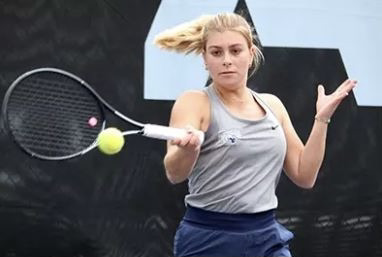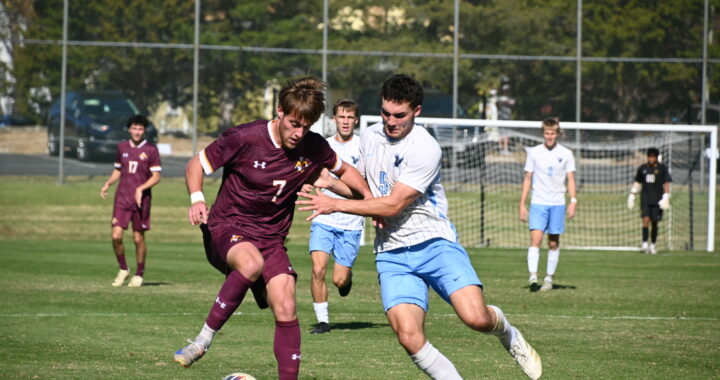Club tennis captain combats disease with passionate play
3 min read
Junior Emily Saia has battled Hemangioma since the age of 10 and uses tennis to defy the odds against her. As a captain of the club tennis team, she is doing well. (Leah Machesney | UMW Athletics)
By JOE GARAY
Participation in sports is an important part of Emily Saia’s life. Currently a junior studying psychology at the University of Mary Washington, Saia has been a part of the university’s tennis club since freshman year.
Growing up, Saia was very active, playing lacrosse and soccer. Unfortunately as she grew older she began to notice a problem in her leg; a problem that would begin to limit her ability to play the sports that she truly enjoyed.
In fifth grade, Saia was diagnosed with Hemangioma. According to the American Academy of Orthopedic Surgeons, Hemangioma is a “benign (noncancerous) tumor made up of blood vessels.” Also, according to their website, Hemangiomas can occur in different parts of the body, including: “skin, muscle, bone, and internal organs.”
By the time she was in eighth grade she began to notice that at certain times her left leg, more precisely, her left thigh, would begin to swell more frequently, becoming painful to the touch and making it difficult for her to walk or move in the fast paced manner that is demanded in sports. It was during her eighth grade year that Saia underwent four procedures, in an attempt to block or stop the blood flow to the tumor. Despite the doctor’s’ efforts, the procedures did not work and the swelling and tightness would return.
“Physically removing the tumor would have caused damage to my leg muscles, since the tumor itself is in the muscles,” she said “and in the end, the tumor is benign, so it wasn’t a matter of life and death.”
According to the AAOS, “Hemangiomas very rarely become cancerous, most do not require any medical treatment.”
So after the unsuccessful surgeries, Saia decided that it was best to leave the tumor where it is, and adjust life so that her leg would not become as irritated.
It was during this time period that Saia began to notice the environments in which her leg pain would begin to flare up.
“I began to notice that the swelling and pain would flare during certain times of the day, particularly while I was playing contact sports, where you are more likely to be hit by a ball or another player.”
In order to obtain more control over the pain that results from the hemangioma in her thigh, Saia decided it was best to not play those contact sports that were irritants.
This however, does not mean that she stopped playing sports altogether. As mentioned before, remaining active in sports is very important in Saia’s life.
“I wanted to remain active and be challenged” Saia said, which is why she decided to play Tennis more.
During her high school years, Saia was a part of her school’s tennis team, which won a conference championship. She is currently the captain of the student-run tennis club team at the University of Mary Washington, which, according to the University of Maryland’s tennis club blog, defeated West Virginia University, in the Silver Bracket finals last spring.
Saia strives to maintain an active life, not letting the Hemangioma stop her from participating in sports, saying “It is what it is.” Saia is enjoying her time in the Tennis Club where she and her fellow tennis players “are there to have fun.”
The University of Mary Washington tennis club currently practices every Monday and Thursday from 9:00 p.m. to 10:30 p.m.


